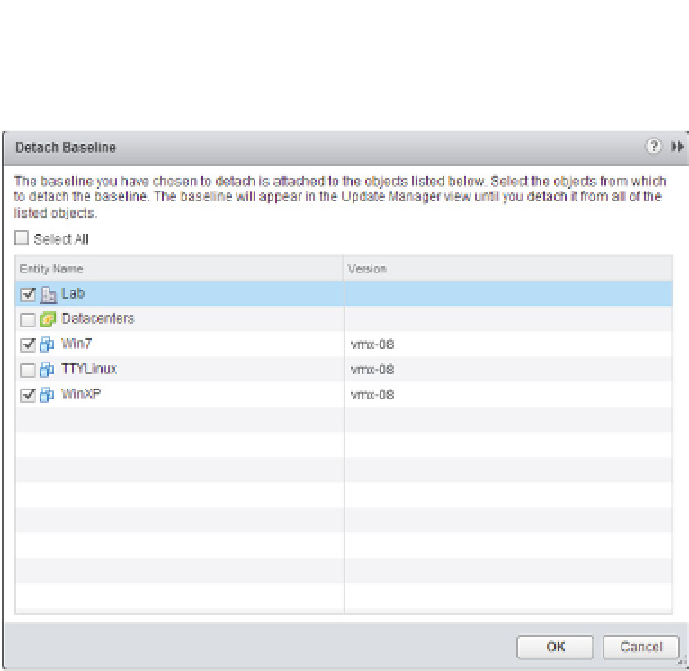Information Technology Reference
In-Depth Information
explicitly attached to each child object—if an object has inherited the baseline, then this can be
detached only at the point it was applied).
Figure 4.21
When you're detaching
a baseline or baseline
group, VUM off ers
the option to detach it
from other objects at
the same time.
In much the same way as simply dei ning a baseline or baseline group wasn't enough, simply
attaching a baseline or baseline group to an ESX/ESXi host or VM isn't enough to determine
compliance or noncompliance. To determine compliance or noncompliance with a baseline or
baseline group, you need to perform a scan.
Performing a Scan
The next step after attaching a baseline is to perform a scan. The purpose of a scan is to determine
the compliance, or noncompliance, of an object with the baseline. If the object being scanned
matches what's dei ned in the baseline, then the object—be it an ESX/ESXi host, VM, or virtual
appliance instance—is compliant. If something is missing from the object, then it's noncompliant.
While the process of scanning these objects within vCenter Server is essentially the same,
there are enough differences in the processes and requirements to make it worthwhile to exam-
ine each one.
Scanning VMs
You might perform any of three different types of scans against a VM and virtual appliances
using VUM:
◆
Scan the installed version of VMware Tools to see if it's the latest version.
Scan the VM hardware to see if it's the latest version.
◆
Scan a virtual appliance to see if a new version is available and if it can be upgraded.
◆




























